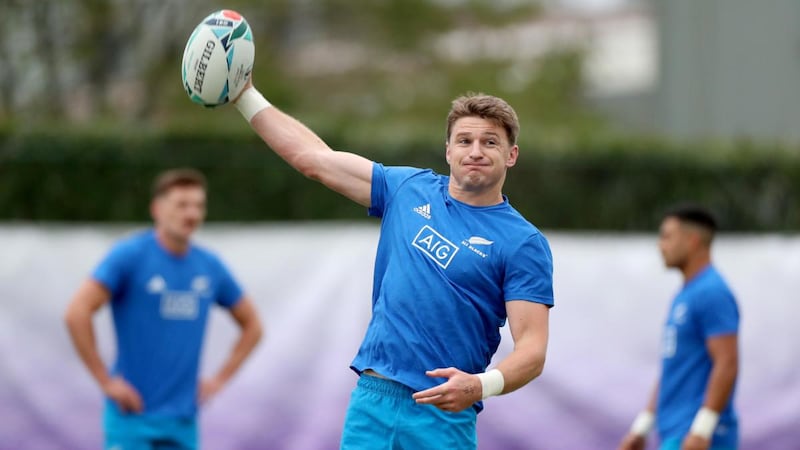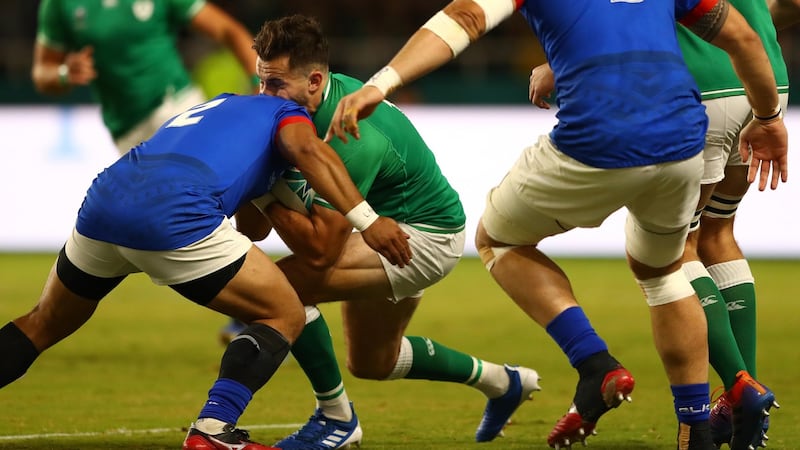President John F Kennedy famously said "the time to fix the roof is when the sun is shining." In other words, when you know an approaching event will test you, get prepared well beforehand.
In June 2018, the Australian sunshine was beaming down on Irish rugby. That three-Test tour was the time when Ireland should have fixed their roof.
To defeat New Zealand, Ireland will need to score multiple tries. Ireland's performances in 2019 have displayed no evidence that they have the attack to achieve this.
That grinding series win against Australia was when Joey Carbery should have started all three matches at either fullback or outhalf and for an expansive attack to be added to Ireland's low-risk, high-attrition plan that was proving so valuable at that time.
Let's face the facts. If Ireland could not score enough tries to beat Japan two weeks ago, the chances of scoring enough to defeat New Zealand on Saturday are exceptionally low.
In contrast, New Zealand have done the exact opposite to Ireland.
Counter-intuitively, the Kiwis have moved the best outhalf in the world, Beauden Barrett, to fullback. This gives New Zealand a wide playmaker, to attack the last few centimetres of width on the field. All the sub units, that is the frontrowers, locks, centres, backrow, halves, back three and the bench have all been experimented with.
Prepared to lose
To do this, New Zealand have been prepared to lose a few games in the 18 months leading up to the World Cup.
Steve Hansen knows that winning the Webb Ellis trophy is the prize, not the bragging rights of a summer tour. The Kiwi roof has been well and truly repaired.
To complicate the Irish difficulties even more, their game plan has not progressed during this tournament. Compare the Irish development to that of Japan. The Brave Blossoms, as individuals and as a team, have grown before our eyes.

The Ireland camp tells us offloading, counterattack and wide attack is too risky at the international level. Somebody forgot to tell that to the Japanese, because they have counterattacked and offloaded to create glorious space, scoring remarkable tries and famous victories in the process.
Ireland’s mission to defeat the best team on the planet is enhanced in that they have 12 players who have beaten the Kiwis before and in any two horse race there is always a chance.
The caveat is that Ireland will have to play well beyond the level of any previous performances at a World Cup under Joe Schmidt.
That is not impossible, but we are dealing with hope, not evidence, which the bookies will tell you, is a big gamble.
The most likely vehicle for Irish hope is that referee Nigel Owens may be forced to deliver yellow or red cards to the Kiwis, who always play close to the borders of physicality and cynicism.
This week the chief executive of World Rugby, Brett Gosper, when commenting on the high number of yellow and red cards for shoulder contact to the head at this tournament said, "the behaviour of players and coaches will change over time. We're willing to risk some outcomes."
What a damning indictment on World Rugby. The fact is World Rugby have legislated this law so badly that the referees, our on field judges, are left with no room for interpretation. Any shoulder contact to the head is yellow or red.
The law of unintended consequences has smashed into World Rugby's poorly thought through legislation. This was displayed vividly by the totally unjust sin binning of the Samoan hooker, Seilala Lam, for his non-tackle on Jacob Stockdale. There is a photo doing the rounds of the internet of the stationary Lam, the instant before Stockdale runs into him.
Deeply wrong
Lam has his knees bent, is low to the ground with his eyes on Stockdale. Lams arms are high and spread. A legal and safe tackling position. Stockdale is striding downwards, into the stationary Lam.
Stockdale collides with the low crouching Lam. Lam is sin binned. Every person who has ever played rugby knows this to be deeply wrong.
Currently, as World Rugby has legislated, a player who headbutts an opponent on the shoulder, gets the other guy sin binned. Madness.
We all know that is not the intention of the law and that players must be protected from head injury, but this piece of legislation from World Rugby is so poorly constructed that the referee’s ability to use their judgment on split second, unintentional player actions, like Lam’s, has been completely removed.

The legislation is obviously a work in progress and its complex consequences have not been analysed thoroughly. Gosper admitted that actions besides yellow and red cards, that would leave a player on the field but have his action’s reviewed by a judiciary after the match may be considered in the future.
The problem is that governing bodies are supposed to implement laws after long debated discussion and trials. World Rugby’s diligence on this law has not been performed to an acceptable level.
Like Ireland’s preparation for today’s quarter-final, World Rugby should have been fixing their roof on this issue in June 2018, not during Rugby’s premier tournament. Our governing body has let us all down.
There is no evidence, from any match in 2019, that Ireland can win on Saturday. That said, but Ireland can hope that World Rugby’s poorly framed legislation may come to their rescue.
Of course it may also destroy them.
For Ireland and World Rugby it's a very sorry state of affairs.













